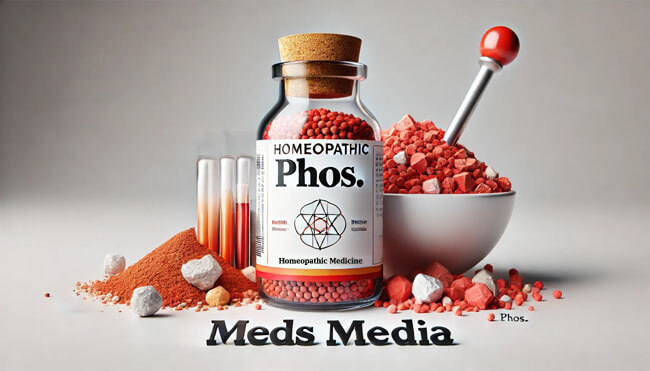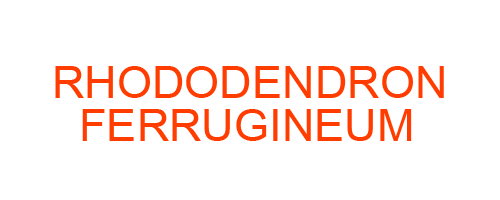Rhododendron ferrugineum is a homeopathic medicine made from the plant commonly known as the alpenrose or rusty-leaved alpenrose. It belongs to the family Ericaceae and is native to the European Alps. In homeopathy, Rhododendron ferrugineum is primarily used to treat various rheumatic and neuralgic conditions.
Properties and Preparation:
The whole plant of Rhododendron ferrugineum is used for preparing the homeopathic remedy. The plant is collected during its flowering season, which typically occurs from June to August. The collected plant material is then processed through a series of dilutions and succussions, following the principles of homeopathic preparation.
Symptoms treatment and materia medica:
Rheumatic Pains: Rhododendron ferrugineum is known for its effectiveness in relieving rheumatic pains that are worse before storms and in cold, damp weather. The pain is often shifting in nature and can affect various joints and muscles.
Neuralgic Pains: It is also indicated for neuralgic pains, especially in the face, head, and teeth, which are aggravated by touch and motion.
Eye Complaints: Rhododendron ferrugineum can help with eye conditions such as sharp pain, pressure, and sensitivity to light.
Headaches: It is useful for headaches that are throbbing, bursting, or pulsating in nature, often accompanied by pain in the eyes and temples.
Toothache: This remedy can provide relief from toothaches that are worsened by cold air and touch, and may extend to the face and ear.
Joint Pains: Rhododendron ferrugineum is indicated for joint pains that are worse during rest and before storms, and improve with motion and warmth.
Backaches: It can be used for backaches that are aggravated by cold, damp weather and relieved by pressure or lying on a hard surface.
Digestive Disorders: It may help with digestive complaints such as flatulence, bloating, and colicky pain, particularly aggravated by eating cabbage or raw vegetables.
Prostatic Troubles: Rhododendron ferrugineum is used for prostate-related symptoms such as urinary difficulties, frequent urination at night, and shooting pains in the perineum.
Skin Affections: It can assist with skin conditions like itching, burning, and eruptions aggravated by cold air and wet weather.
Restlessness: This remedy is indicated when there is a general sense of restlessness, both physically and mentally.
Aggravation from Touch: Many symptoms worsen upon touch or pressure, including pains in different parts of the body.
Aggravation from Cold, Damp Weather: Symptoms tend to worsen in cold, damp weather conditions.
Improvement with Motion: Symptoms often improve with movement and warmth.
Pre-storm Sensitivity: Rhododendron ferrugineum is known for its efficacy in individuals who are highly sensitive to changes in weather conditions, particularly before storms.
Frequently Asked Questions (FAQ):
Q: What is Rhododendron ferrugineum used for in homeopathy?
A: Rhododendron ferrugineum is primarily used in homeopathy to address rheumatic and neuralgic conditions. It is known for its effectiveness in relieving rheumatic pains that worsen before storms and in cold, damp weather. It is also indicated for neuralgic pains, especially in the face, head, and teeth, which are aggravated by touch and motion.
Q: How is Rhododendron ferrugineum prepared in homeopathy?
A: The whole plant of Rhododendron ferrugineum is used for preparing the homeopathic remedy. It undergoes a process of dilution and succussion, following the principles of homeopathic preparation.
Q: What are the main symptoms and conditions that Rhododendron ferrugineum can address?
A: Rhododendron ferrugineum is commonly used for symptoms and conditions such as rheumatic pains, neuralgic pains, eye complaints, headaches, toothaches, joint pains, backaches, digestive disorders, prostatic troubles, skin affections, restlessness, sensitivity to touch, aggravation from cold and damp weather, improvement with motion, and pre-storm sensitivity.
Q: How should Rhododendron ferrugineum be taken?
A: The dosage and potency of Rhododendron ferrugineum can vary depending on the individual and the specific symptoms being addressed. It is recommended to consult a qualified homeopathic practitioner for proper guidance on dosage and administration.
Q: Are there any known side effects or contraindications associated with Rhododendron ferrugineum?
A: As with any homeopathic remedy, Rhododendron ferrugineum is generally considered safe when taken as per the recommended dosage. However, it is advisable to consult a homeopathic practitioner to ensure its suitability for your specific case and to rule out any contraindications or interactions with other medications.
Q: Can Rhododendron ferrugineum be used during pregnancy and breastfeeding?
A: It is generally recommended to exercise caution and seek professional advice before using any homeopathic remedy during pregnancy and breastfeeding. A qualified homeopathic practitioner can assess your individual situation and provide guidance on the appropriate use of Rhododendron ferrugineum in such cases.
Books for Reference:
- Materia Medica and Repertory” by William Boericke
- A Study on Materia Medica” by N. M. Choudhuri
- A Manual of Pharmacodynamics” by Richard Hughes
Please note that the information provided here is for informational purposes only and should not replace professional medical advice. It is always recommended to consult qualified homeopathic doctors for proper diagnosis, guidance on the use of Rhododendron ferrugineum and individualized effective homeopathy treatment.
Similar Posts
Zincum Picricum Homeopathic Medicine & Personality | Uses, Benefits & Indications
Zincum Phosphoricum Homeopathic Medicine & Personality | Uses, Benefits & Indications
Zincum Iodatum Homeopathic Medicine & Personality | Uses, Benefits & Indications
Zincum Bromatum Homeopathic Medicine & Personality | Uses, Benefits & Indications
Zea Homeopathic Medicine & Personality | Uses, Benefits & Indications
Zincum Aceticum Homeopathic Medicine & Personality | Uses, Benefits & Indications
Zincum Cyanatum Homeopathic Medicine & Personality | Uses, Benefits & Indications
Zincum Muriaticum Homeopathic Medicine & Personality | Uses, Benefits & Indications
Zincum Oxydatum Homeopathic Medicine & Personality | Uses, Benefits & Indications
Zincum Sulphuricum Homeopathic Medicine & Personality | Uses, Benefits & Indications

Phosphorus Homeopathic Medicine & Personality | Uses, Benefits & Indications
Causticum Homeopathic Medicine & Personality | Uses, Benefits & Indications

Top Global Homeopathic Medicine Manufacturers

Top renowned Homeopathic research institutes worldwide


